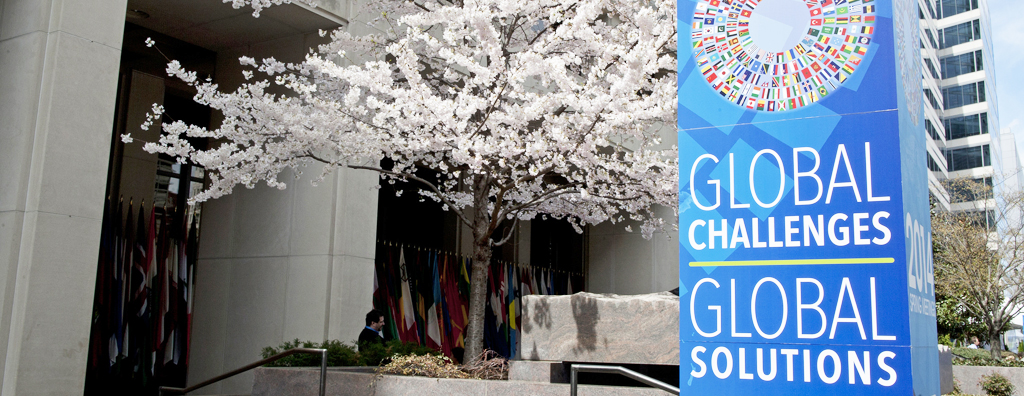
How the Public Sector Can Mitigate Risk for Conservation Investors
Peter Weisberg, The Climate Trust
As published by GreenBiz – March 16, 2016
Conservation finance, or investments that positively impact ecosystems while generating profits, is key to building infrastructure and changing land management at the pace and scale needed to avoid the worst impacts of climate change. To be investible, a conservation project must generate revenues. Many new projects that previously depended on grants or government funding can become investment opportunities due to a new source of cash flows—environmental markets.
Yet, when investors and lenders look at potential revenue from environmental markets today, they see significant policy risk. All markets and commodities are affected by policy, yet the entire value of environmental credits is created by it. For example, without regulation to allow for water quality trading, a water quality credit has no value. In environmental markets, policy creates and controls both supply (which projects qualify to generate credits), and demand (how many credits polluters need to purchase).
Given the potential for policy to change, investors see future revenues from environmental markets as risky and therefore heavily or completely discount them. This significantly hampers the ability for environmental markets to finance new projects. A lot of private capital is looking for opportunities with environmental benefits, but sees too much risk to invest. Naturevest and EKO Asset Partners report that $1.9 billion was deployed into conservation investments between 2009 and 2013 and that a projected $1.5 billion of additional raised but un-invested capital would be deployed between 2014 and 2018. The available capital includes but is not limited to capital interested in projects that benefit from environmental markets. As indicated in the report, one potential challenge in deploying the un-invested amount could be a shortage of opportunities with appropriate risk and return, among other factors.
This interested capital offers a significant opportunity for governments, foundations and other public funders to reduce the perceived risks associated with environmental markets to leverage limited public funding to maximize environmental benefits. However this requires some creative thinking.
The World Bank’s Pilot Auction Facility provides an excellent case study. They identified thousands of methane mitigation projects globally that were unwilling to go through the retrofits needed to continue operation due to the collapse of international carbon credit prices. Rather than granting funds for projects to continue to avoid potent methane emissions, The World Bank established a mechanism to assure projects of a minimum carbon price—enabling projects and their investors to confidently invest in and continue to operate projects. The World Bank’s Pilot Auction Facility sells “put options” to projects that give them the right (but not the obligation) to sell credits to The World Bank at a fixed price over a five-year period.
The Pilot Auction Facility is backed by $100 million of donations from Germany, Sweden, Switzerland and the United States—yet given its unique structure, its environmental impact is likely to be much larger. If the international carbon markets are reinvigorated by the commitments and potential trading opportunities opened by the Paris Agreement, projects that have been awarded put options will sell their future credits at market where prices should be higher (and none of the dollars donated to the Pilot Auction Facility will be spent). These donated dollars can instead be revolved into additional put options, using their risk mitigation to catalyze the development of another round of new projects. If market prices continue to be low and the put options are exercised, these public dollars will instead be spent on verified reductions of greenhouse gas emissions.
Following the model of the World Bank, The Climate Trust (The Trust) now believes the time is right to leverage its funding as risk mitigation instead of directly purchasing offsets. The Trust is therefore launching an investment fund that will finance projects that depend upon future carbon market revenues that traditional lenders are unwilling to fully value. In order to mitigate the risks that policy will change and carbon prices will collapse, The Trust is providing this fund with a put option that guarantees a minimum price for a portion of the credits the fund will generate. With this insurance in place, The Trust is raising private capital that otherwise sees environmental markets as too risky.
Emerging environmental markets in the United States are sorely in need of more of this policy risk mitigation. Beyond carbon markets, for example, biogas projects have been unable to turn high prices for Renewable Identification Numbers under the federal Renewable Fuel Standard and Low Carbon Fuel Standard Credits under California’s Low Carbon Fuel Standard into a financeable revenue stream. Investors and lenders are hesitant to build new projects that depend upon these revenues because of their uncertain political future.
The Trust’s modest funds under management are insufficient to meet the potential of this opportunity to mitigate risks in carbon, renewable fuel and other environmental markets. Those pockets of public funding used to address environmental needs—like the $12 billion California is anticipated to raise from the auction of allowances which must be spent on climate mitigation, or the $6 billion the United States Department of Agriculture spends annually on conservation programs—should look to the risk mitigation models created by the World Bank’s Pilot Auction Facility and The Climate Trust.
Credit Suisse, World Wildlife Fund and McKinsey estimate mitigating climate change will require an annual investment of $250 to $350 billion per year. Sizeable numbers such as these make it clear that public funds alone are insufficient to meet the world’s conservation needs, but by using these funds to mitigate the risks of emerging environmental markets, private capital can be leveraged to achieve much needed scale and impact.